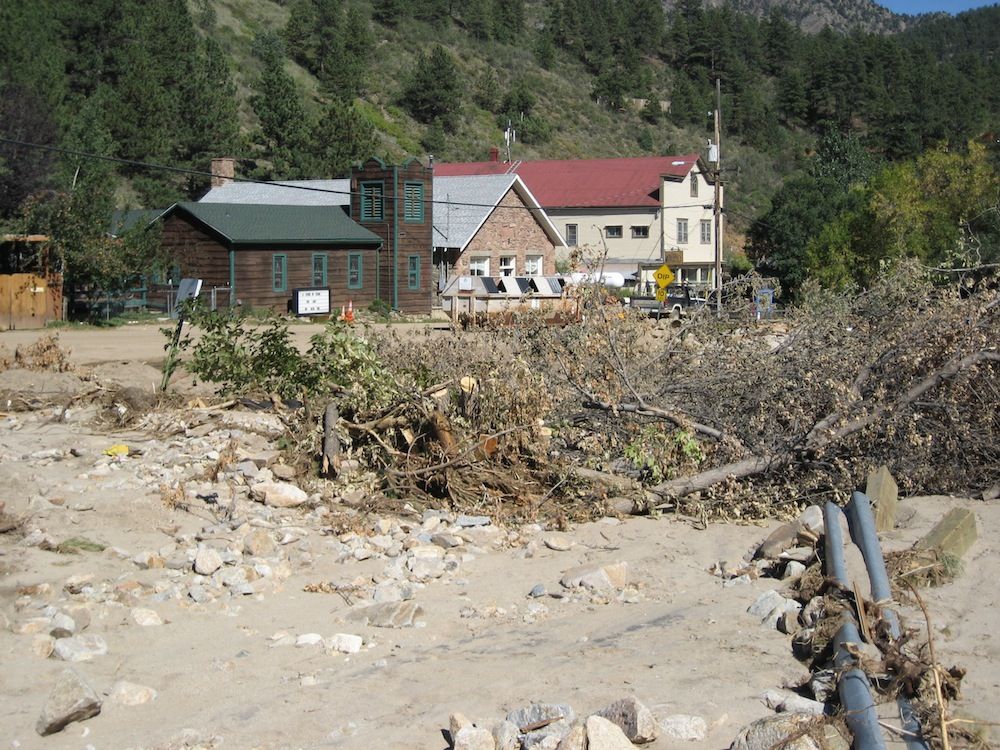
Why Did Congress Just Sink Flood Insurance Reform? (Op-Ed)

Elliott Negin is the director of news and commentary at the Union of Concerned Scientists (UCS). This article is adapted from a piece that appeared on the Huffington Post. Negin contributed this article to Live Science's Expert Voices: Op-Ed & Insights.
On March 10, 30 members of the new Senate Climate Caucus held an all-night talkathon on the Senate floor to highlight the urgency of global warming. Later that week, all but one voted to roll back a law that actually does something about it, illustrating the tough choices the U.S. Congress has to make when confronting such a complex problem.
The law, called the Biggert-Waters Flood Insurance Reform Act, required the financially troubled National Flood Insurance Program (NFIP) to boost some homeowner premiums to better reflect flood risks and costs, which no doubt will increase due to coastal development and climate-change-induced sea-level rise . The taxpayer-supported program is currently more than $24 billion in debt, and Biggert-Waters — which passed by a nearly unanimous vote just two years ago — would have put it on more solid financial footing.
The bill the Senate passed, the Homeowner Flood Insurance Affordability Act, reverses the Biggert-Waters rate hikes for homeowners with discounted policies, caps annual rate increases at 18 percent, and urges the Federal Emergency Management Agency — which administers the insurance program — to peg residential premiums below $2,500, annually.
Those provisions could drown the flood insurance program in red ink if a major storm like Katrina or Sandy hit the coast.
No matter,U.S. President Barack Obama plans to sign the bill, which already passed the U.S. House of Representatives, even though the administration in January protested that re-instituting the subsidies would "further erode the financial position of the NFIP."
"The new legislation will perpetuate a broken system by keeping premiums unrealistically low, encouraging coastal communities to continue to build — and rebuild — in high flood-risk areas, exposing them to growing risks and costs," says Rachel Cleetus, an economist at the Union of Concerned Scientists who wrote a report on the issue last summer. "It makes no sense for taxpayers to continue to subsidize flood insurance in high-risk areas that are only going to become riskier with rising seas and worsening storm surges."
Sign up for the Live Science daily newsletter now
Get the world’s most fascinating discoveries delivered straight to your inbox.
Specifically, the new bill repeals the Biggert-Waters rate increases for premiums that were originally based on outdated flood maps, even when updated maps show a rising risk. Instead, the bill requires residential policyholders to pay a $50 annual surcharge and business owners and second-home owners to pay $250, forcing all insurance program participants to subsidize high-risk policyholders.
"Premium rates need to be higher for high-risk policyholders for two main reasons," Cleetus explains. "First, rates should accurately represent true flood risk so homeowners are aware of it and can take steps to better protect their property. If rates are artificially low, homeowners may not realize just how exposed they are until they're flooded, and taxpayers will have to pick up the tab to cover their losses. Second, more realistic premiums would help shore up the flood insurance program."

Cleetus agrees that affordability should be a top priority, but maintains Congress had better options than deep-sixing Biggert-Waters, including phasing in premium increases more slowly and establishing a means-tested voucher program to protect low-income and fixed-income policyholders.
In any case, the new flood insurance legislation won't be the end of the story. At some point, Congress will have to revisit the program yet again, because the new bill won't solve its problems. In the meantime, lawmakers have an opportunity to help their constituents prepare for the effects of global warming: Embrace President Obama's proposal for a $1 billion "climate resilience fund," some of which could be used to protect coastal communities.
Such a fund is "crucially needed," Cleetus says, but Congress also has to address the cause, and that would require putting a price on carbon emissions. "As the costs of climate change mount, more people will realize that they're paying for our dependence on fossil fuels," she says. "Putting a price on carbon and using some of that revenue to cut emissions and protect our communities is the most obvious and sensible thing to do."
Negin's most recent op-ed was "U.S. 'Fukushima' May Only be a Matter of Time."This article was adapted from "Congress Deep-Sixes Flood Insurance Reform," which first appeared on the Huffington Post. The views expressed are those of the author and do not necessarily reflect the views of the publisher. This version of the article was originally published on Live Science.













